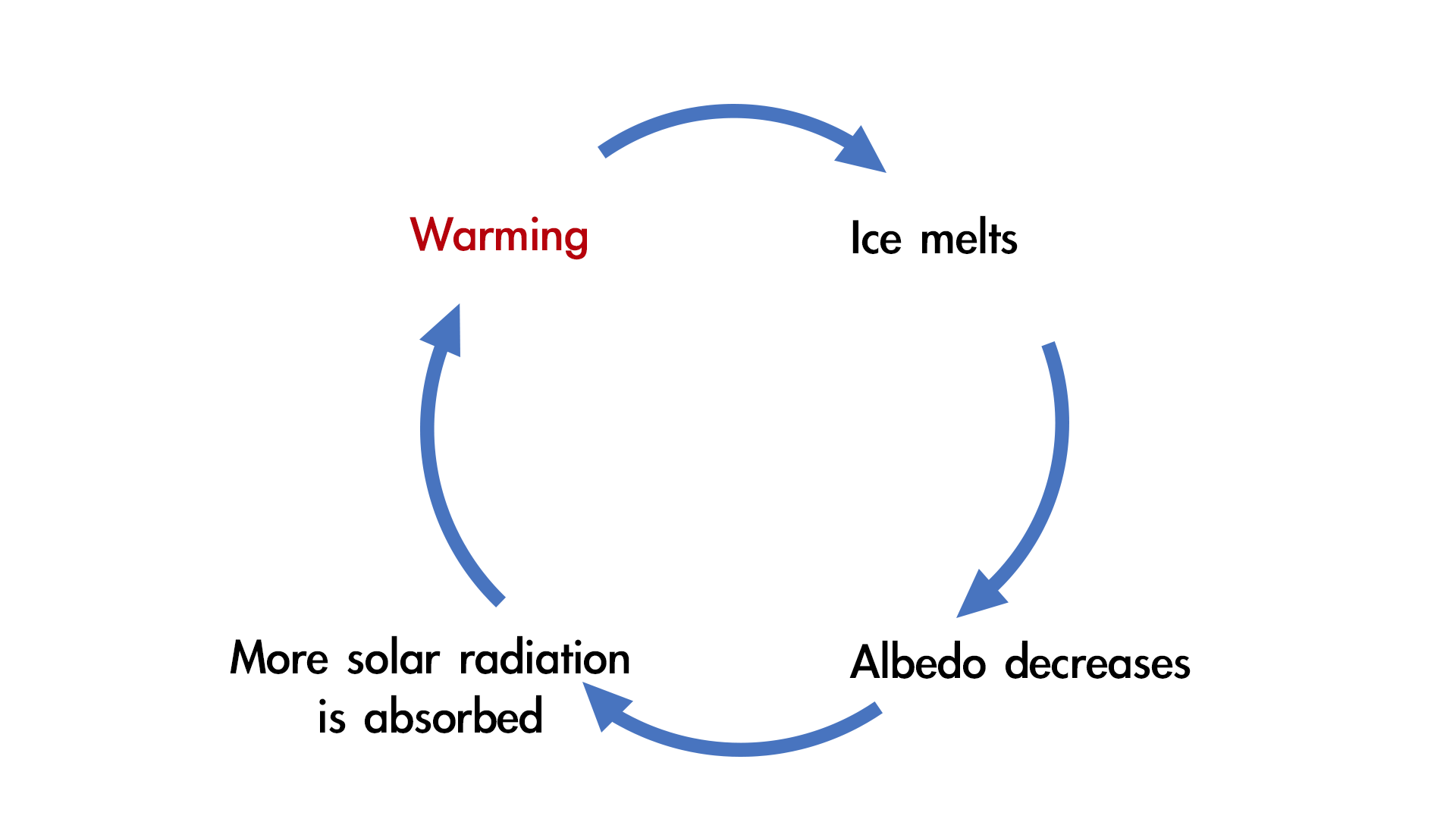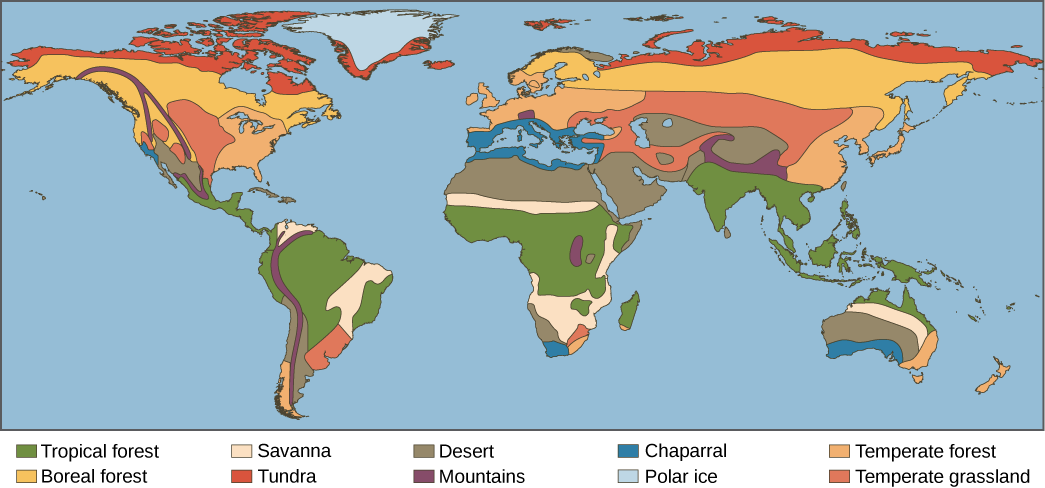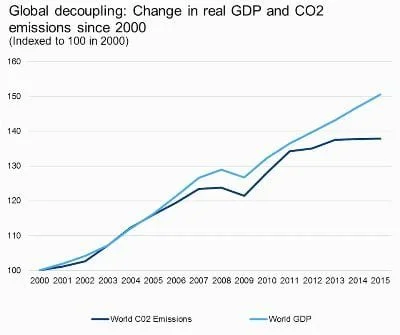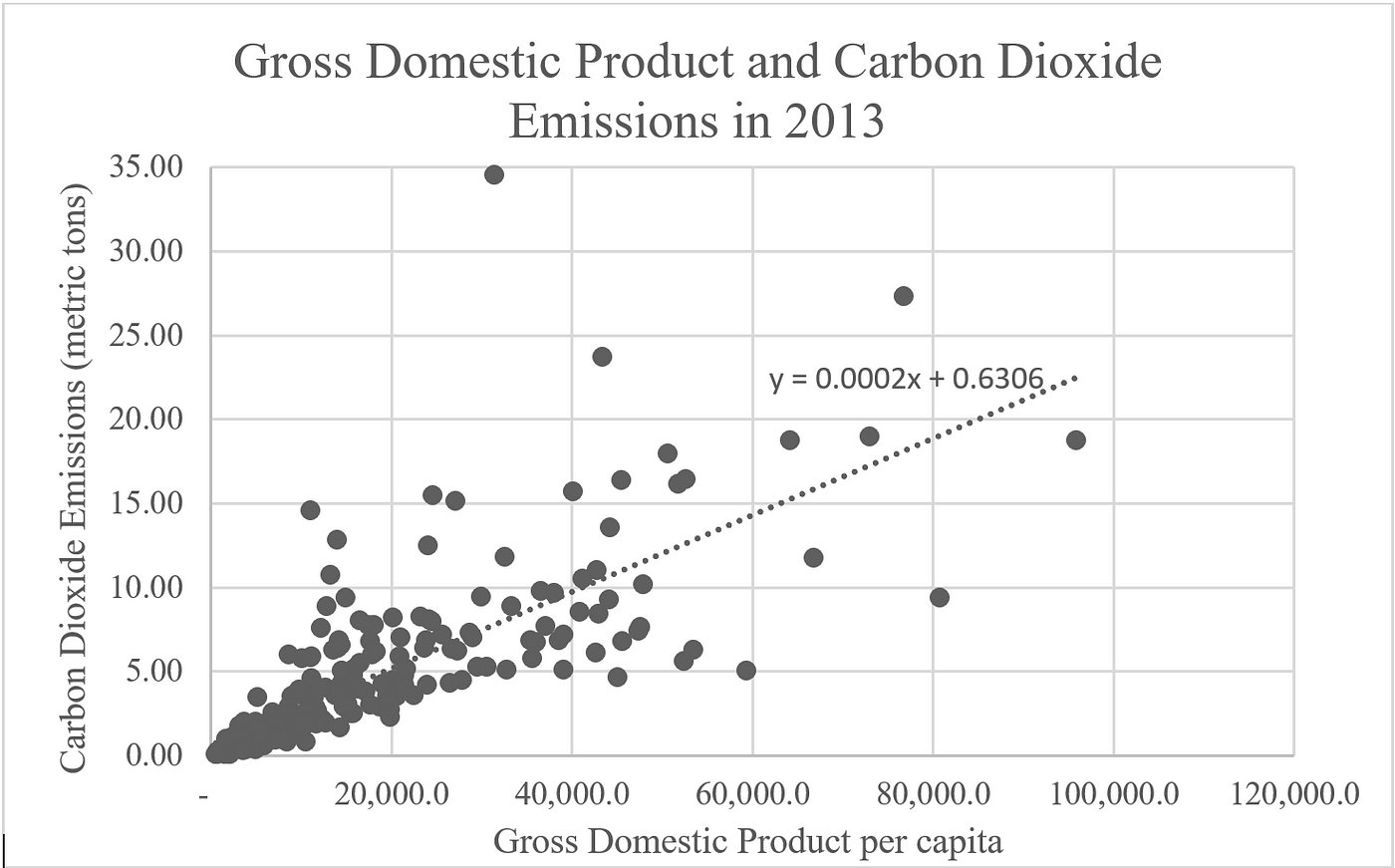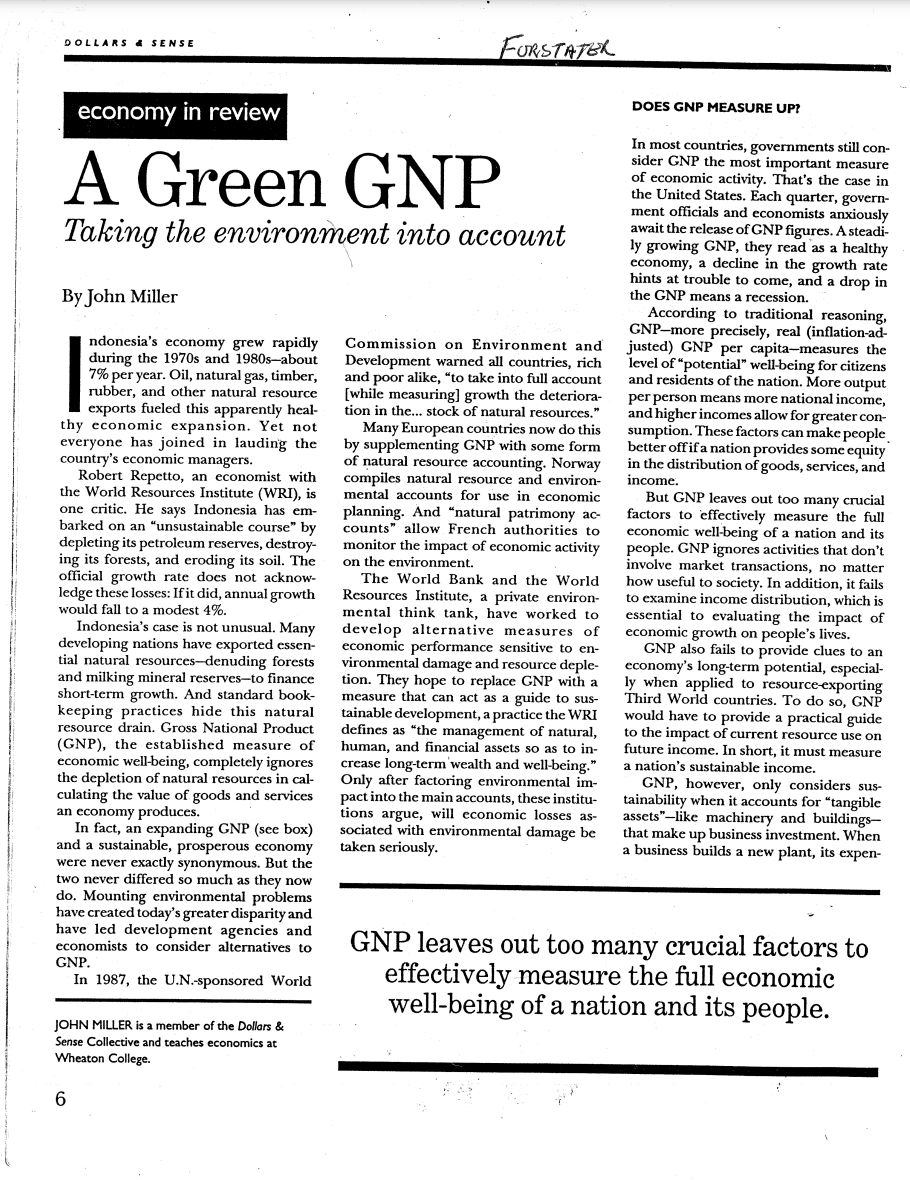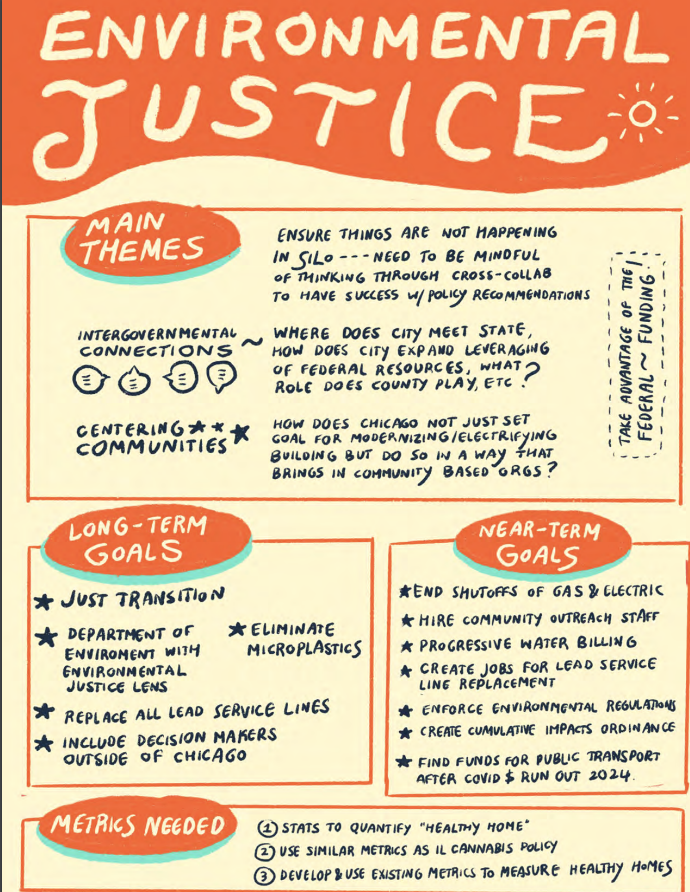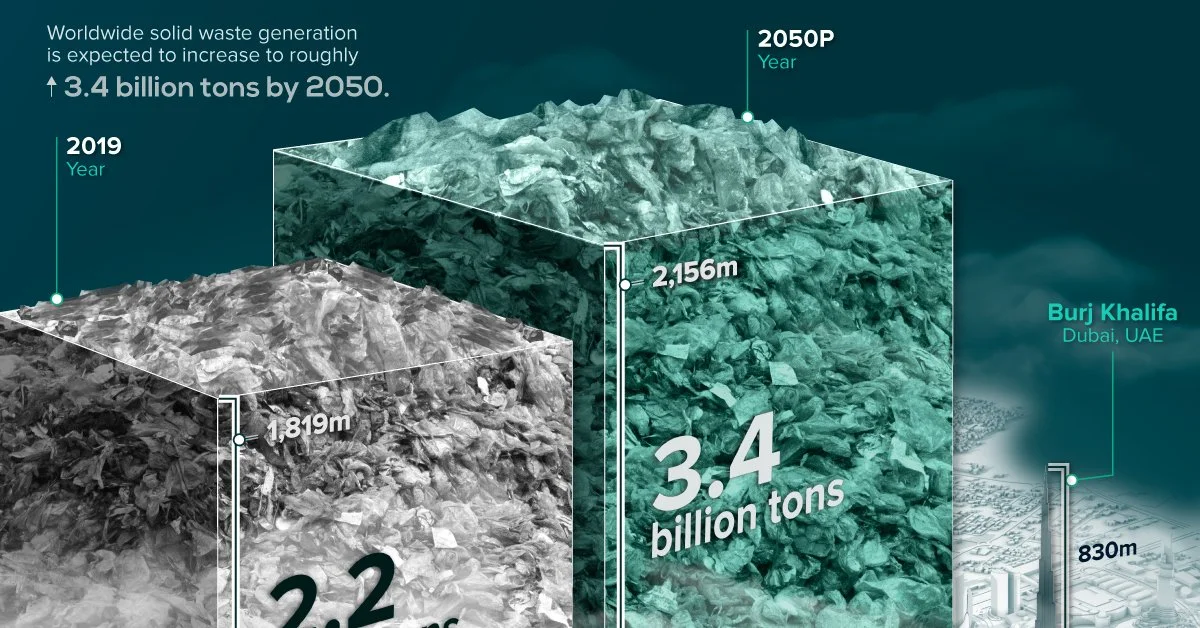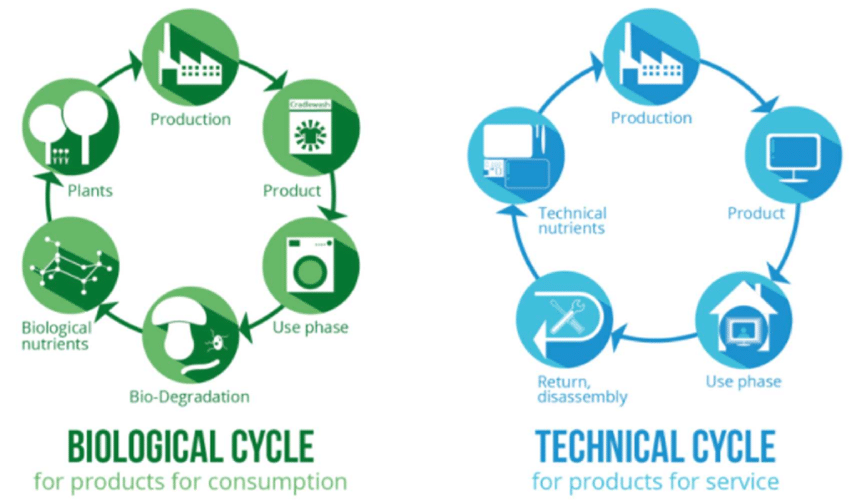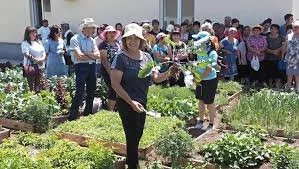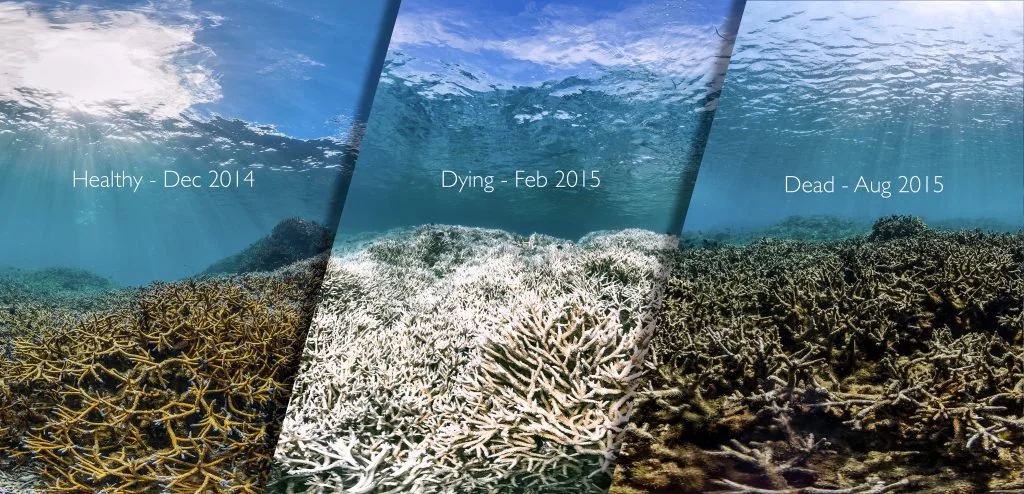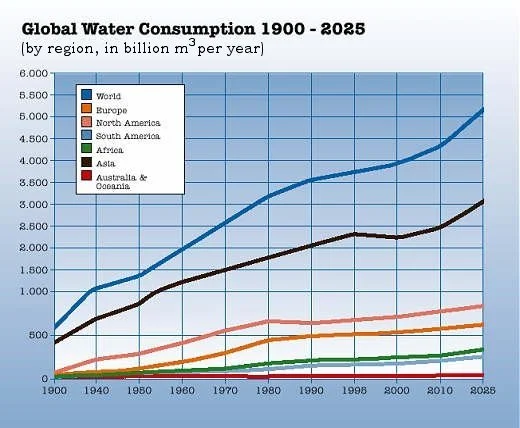Analyzing Environmental Issues through the Framework of Societal Causes and Effects
Kenny Moll
What is an environmental problem that concerns you most? Identify some of the potential solutions to this problem. Discuss the pros and cons of these solutions:
I believe the foremost environmental problem is the unfortunate marriage between our fundamental relationship with the environment and an economic system that inherently exploits and degrades that very environment for profit. Capitalism functions under the notion that our land and resources are infinite without factoring in the health/wellbeing of the environment or the definitely finite resources the environment has to offer.
This ties into our addiction to the use of fossil fuels, our negligence towards the land we use, our reckless agricultural, farming and fishing practices, astronomical loss of biodiversity subsidizing companies for polluting and profiting, environmental racism and the practice of moving sources of pollution into low-income/non-white neighborhoods and allowing lobbyists or politicians to use their money to continue to bully those opposed to environmental destruction without repercussion all in the means of capital gain for businesses. These issues are tied to a systemic and institutional problem within our government and economy. We have separated ourselves from the environment to the point that we see it as a commodity instead of connected to us intrinsically. It is being stripped from us by the very corporations that want to use it for greed and sell it right back to us wrapped in plastic.
Unfortunately, systemic issues are increasingly harder to change, especially because the change needs to be made by the ones in power. The ones in power unfortunately have no monetary incentive to change.
Corporations such as oil and gas companies have known since the mid 1960’s how badly their business practices would negatively affect the climate. Instead of changing their ways, they doubled down on their use of fossil fuels and have operated campaigns of misinformation to be spread to the public about climate change. This allowed oil and gas companies to make exponential capital gains throughout the past 60 years. This only occurred because they were backed by a government who constantly deals out handouts to companies who amass wealth for the nation while lower income neighborhoods affected by the calculated placement of sources of pollution subsidize these companies with their lives.
Some possible incentives include governments putting their money where their mouth is. Declaring a climate emergency in the wake of what is happening in the world would be one way to promote change on a larger scale, as well as initiating radical changes within the corporations that are causing the majority of climate change.
At the very least, there needs to be a fundamental change to our flawed system in the way of an addition to the mention of the environment in our written GDP. Our governments work hard to enforce companies to turn a profit year after year while incentivizing the destruction of our land but nowhere in the ledger of a nation’s gross national product is there mention of the destruction of the land. There are accounts of the damage done to equipment used to manufacture goods but nowhere is there an account of the damage done to the environment. The only time a company is incentivized to take the environment into account is if it will negatively impact their profits. This is directly built into our economic system. The businesses that are succeeding the most are rewarded for ecological destruction due to the benefits of profit gain.
Optimistically, to ensure we don’t reach the point of no return with respect to climate change, is to implement radical change within our economic system; not only addressing the environment while we destroy it, but fundamentally changing how we operate in regard to the environment. Instead of viewing the environment as a means to abuse and produce and quantify its value by the gains in profit, we look at the environment as life itself, and somehow factor that into our governmental and economic systems. This practice of connecting to our environment would be a no-brainer to indigenous and native societies who have coexisted with the environment long before colonialism and imperialism. But we fail to understand the permanent damage and impending repercussions our practices cause.
Within implementation of new legislation, there is always the risk of creating new loopholes and alleys for those who exploit the land to utilize. Also, if we create new legislation with the notion of change, it could spark complacency as it always does. The cons of implementing fundamental change lay within public perception and the perpetual machine of political rhetoric that is used to culminate retaliation. Companies and powerful businesses possess power that could be used to abscond these responsibilities.
Word Count: 752
Decreasing albedo through earth’s increasing temperatures forms this positive feedback loop
These two graphs show the gradual increase of CO2 emissions with the increase of Gross Domestic Product over a period of time
There must be a change made within our capitalist system, such as factoring in the environment within our capitalist systems to properly assess the damage being done. Fundamentally altering our GNP, as proposed in the text above, would be a sound place to start.
Ecology and Human Disruption: How far can we push our environment to adapt to forced rapid changes?
Miller’s chapters for this week touch on the aspects of an ecosystem that contribute towards its viability. The topics of biodiversity, ecological succession, nutrient and energy cycling, the roles of species in an ecosystem and the effects of human activities on all of these are all explored while taking a systems level approach to fundamentally understanding the environment.
The interconnectedness of all things through earth’s global ecosystem needs to be at the forefront of thinking about humans’ current impact. By looking at how an ecosystem progresses through ecological succession, and how when hindered, that ecosystem has much less ability to be persistent when introduced with environmental disturbances is proof of this interconnectedness. I want to explore how humans have interfered with this natural process.
Our contributions, in terms of climate change, lead to a domino effect of negative reactions. In Miller’s text, the feedback loops in nature, both positive or negative, are mentioned. For example, human caused global warming leads to the melting of ice caps. Ice caps have high albedo and are highly reflective of light and UV rays. The more the ice melts due to climate change, the less albedo and reflectivity the earth has to decrease warming, and the warmer the earth gets. This then causes more ice and glaciers to melt and the cycle continues. (1)
It begs the question: How much further can we push our planet until it can't naturally be persistent and have successful ecological succession? To answer this question we must understand ways in which climate change impacts ecosystems.
As detailed by the EPA, the effects of climate change can reach far and wide. It can affect speciation in specific areas, alter species populations, change the timing of natural events and cycles, cause changes in ecosystem interactions and negatively influence or reduce ecosystem services. (2)
Habitat loss is the biggest cause of loss in biodiversity (3) and a specific example detailed in Miller’s text is the Monarch Butterfly’s “steady loss of their winter forest habitat in Mexico” and their habitat in northern California. This is directly caused by logging and coastal development. (1)
It is certain that the world can deal with environmental catastrophe, it has dealt with terrible environmental disasters before human intervention and activity, and will continue to deal with them after us. It is important to analyze the answers to these questions through the framework of how it will affect our current practices. The more we pollute and destroy and disable the land we live on to be able to heal and adapt to the changes we are forcing it to adapt to, the more it will affect us. We have already reached a critical point as we are seeing the effects of our activities every day. As time ticks on, and studies become more clear about our actions in terms of hindering our ecosystems ability to reach equilibrium, what does this mean for the human population after we pass the point of no return?
Certain changes to larger ecosystems come with deadly consequences as we can already see increases in environmental disasters such as wildfires, floods, heat waves, clusters of air pollution and dying ecosystems in the ocean. What is important to keep in mind, is that our changes not only cause these catastrophes, but it exacerbates natural disasters. “When we remove or degrade these ecosystems, any damage from a natural disaster such as a hurricane is intensified.” (1, p. 170)
As stated in Thresholds of Ecosystems, some actions need to be taken in order to minimize damage being done to particular ecosystems to mitigate large scale damage through the interconnectedness of these ecosystems. The recommendations, in order:
“Support Research to Identify Thresholds, Enhance Adaptive Capacity, Monitor and Adjust Multiple Factors and Drivers, Develop Scenarios of the Consequences of Alternative Management Options for Dealing with Potential Changes, Collate and Integrate Information Better at Different Scales, Reduce Other Stressors, Manage Threshold Shifts, Project Impacts to Natural Resources, Recognize Need for Decision Making at Multiple Scales, Instigate Institutional Change to Increase Adaptive Capacity and Identify Research Needs and Priorities to Address Thresholds” (4)
This list gives necessary context to the protection of lands and ecosystems as well as delving into the research needed to fully understand the implications of rapid changes. Through the perspective of policy making and systematic change we are able to create the foundation for managing these ecosystems, understand how they have been altered and why. The road to figuring out a solution lies within understanding the root causes and challenging our current notions of normality.
Word Count: 684
(1) Miller, G. Tyler, and Scott Spoolman. Living in the environment. Boston, MA: Cengage Learning, 2021.
(2) Climate Change Impacts on Ecosystems | US EPA, www.epa.gov/climateimpacts/climate-change-impacts-ecosystems.
(3) Haddon, Tom. “Extinct Animals: Result of Climate Change: Earthly Blog.” Earthly, Earthly, 7 Oct. 2020, earthly.org/en-US/how-many-species-are-extinct-due-to-climate-change.
(4) U.S. Climate Change Science Program. Thresholds of Climate Change in Ecosystems. 2009. https://www.globalchange.gov/browse/reports/sap-42-thresholds-climate-change-ecosystems.
The Paths of Energy Consumption: Is There No Clean Energy?
This week, we examined energy consumption, production and distribution while taking into account the specific motives behind new waves of energy campaigns. Changes are being made culturally in the way we view energy and its impact. With the world running out of crude oil and fossil fuels, and movements demanding the transition to renewable energy, we explored the new ways in which energy is being harnessed and utilized. Sometimes, these changes come with unexpected consequences, and the question of sustainability remains at the forefront.
In class we explored the deceptive world of electric cars, solar and wind power as we transition away from fossil fuels through the guise of “green” energy in the film “The Dark Side of Green Energy.” While this program may have been provocative and even one sided, it offered an in depth look into important and poignant topics surrounding green energy that are not often mentioned.
A question I have with regards to these regulations and a global push for green energy is: Will transitioning to green/renewable energy bring down overall global temperatures through reducing CO2 or will the rare metal mining and contributing additional pollutants in order to reach green energy goals have adverse effects? (4)
There are incredibly complex economic, political and environmental factors that go into the process of energy consumption and production that something like a "Just Transition" plan would need to assess and address. The guise of terminology like "renewable" energy needs to be properly reinstated and defined in ways that would disallow governments to exploit it. In the New York Times' article on Romania's unethical logging practices, we can see how the shady methods that lead to carbon emissions is still alive and well even under tighter governmental restrictions. (5)
The efficacy of accountability behind energy becomes muddled when the ones who are responsible of polluting are the ones in charge of assessing the climate impact and determining if their methods are ecologically sound. In terms of progressing our energy consumption and production through sustainability, implementing valid solutions for decarbonizing our energy and funding true renewable alternatives as well as keeping consumers of energy accountable is imperative.
The transition from fossil fuels is a valid transition but it only succeeds when the groundwork for the transition is stable and supported by the entities utilizing energy. This means valid records of production of energy and perhaps larger entities monitoring production and consumption correctly.
While nuclear energy is a more efficient energy source, it is not completely carbon neutral and there are plenty of downsides to the sole reliance as well as expansion of nuclear energy. To fully commission or decommission power plants would demand extreme amounts of energy on its own as well as the political ramifications of increased nuclear funding. (6)
As stated in the 2022 Lancet Report, “With data from the International Energy Agency, this indicator shows that the carbon intensity of the global energy system continued to decrease in 2019 for the seventh consecutive year, to 55·4 tCO2/TJ. However, this is still not enough to keep global warming at 1·5°C, with a reduction of less than 1% from 1992 levels, the year the UNFCCC was adopted. At the pace recorded since 2014, fully decarbonizing the energy system would take 150 more years. The increasing demand for energy means fossil fuel use is still rising, and fossil fuel-derived CO2 emissions increased again in 2021 by 6·0%, after a 5·1% decrease in 2020 during the COVID-19 pandemic, putting CO2 emissions at a record high.” (7)
The need to transition from fossil fuels is clear, and it needs to happen quickly. But the various alternatives, i.e., solar, wind, nuclear, come with their own share of negative effects. Energy systems and the rate of consumption of energy is the largest single source of greenhouse gas emissions. What needs to change are our practices and how we consume said energy. There is no 100% clean energy, and we must act accordingly.
Word Count: 663
General Iron Operations in Lincoln Park, Chicago, processing scrap metal
Transition Team Report to Mayor Brandon Johnson highlighting Environmental Justice
Mountain Pass in Southern California remains only rare earth metal mine in United States
Site of Chinese rare earth metal mine
Continental carbon emissions (GtCO2 and GtCO2e)
(4) Perez, Jean-Louis, director. The Dark Side of Green Energies. 2020. 1 hr., 29 mins. https://www.youtube.com/watch?v=HLfe8uAGZxU&t=3s
(5) Hurtes, Sarah, and Weiyi Cai. “Europe Is Sacrificing Its Ancient Forests for Energy.” The New York Times, 7 Sept. 2022, www.nytimes.com/interactive/2022/09/07/world/europe/eu-logging-wood-pellets.html.
(6) “Renewable Energy Explained - U.S. Energy Information Administration (EIA).” Www.eia.gov, www.eia.gov/energyexplained/renewable-sources/#:~:text=Total%20U.S.%20renewable%20energy%20production.
(7) Romanello, Marina, et al. “The 2022 Report of the Lancet Countdown on Health and Climate Change: Health at the Mercy of Fossil Fuels.” The Lancet, vol. 400, no. 10363, 25 Oct. 2022, www.thelancet.com/journals/lancet/article/PIIS0140-6736(22)01540-9/fulltext, https://doi.org/10.1016/S0140-6736(22)01540-9.
Who Does Climate Change Affect Most and How Are We Perpetuating Environmental Racism?
Climate change affects everyone on earth. You are breathing polluted air right now. But it is important to note that it affects some more intensely than others. How can we change this, and where does it stem from?
The interconnectedness of the environment includes the cycling of pollution, such as air pollution. Environmental degradation that takes place across the globe might have extreme impacts on the ecology of that localized area, but it can soon start to affect the inhabitants or environment of an area far away depending on the scale. This happens not only through the exposure to polluted air, but through adverse affects that air pollution has on the climate. Not only are atmospheric brown clouds directly linked to the deaths of over 380,000 people in China and India, but we can see how soot polluted brown clouds can absorb sunlight and heat the air above glaciers, causing them to melt rapidly. (1)
Air pollution is one example of something that affects everyone and everything on earth, but it does not do so equally. (10) Those with less access to clean air, such as historically marginalized communities, will feel the effects more intensely. The EPA has found that people of color in the USA are at higher risk of exposure to air pollutants, among all income levels and regions. The EPA states “The inequities we report are a result of systemic racism: Over time, people of color and pollution have been pushed together, not just in a few cases but for nearly all types of emissions.” (EPA) This is because oftentimes, lower income communities or non-white neighborhoods tend to be targeted by oligopolies looking to pollute. (9)
A recent example of environmental racism, in Chicago, comes to mind. General Iron, a metal waste processing facility located in the affluent neighborhood of Lincoln Park intended to move its operations to an East Side Latino community surrounded by Black neighborhoods, near schools and playgrounds. General Iron was even incentivized by the local government to move away from its location in the largely white and wealthy neighborhood of Lincoln Park, in order to make way for new development projects. (10)
Local activists, community organizers and teachers went on a months-long hunger strike to advocate against this decision to move, which eventually was appealed and is now being blocked by the current administration. (11) Who gets a say in the decision making process of something like this? Oftentimes, it is not the people being most affected.
When analyzing climate change and its effects, where do we draw our conclusions, what metrics do we use to determine improvements or declines?
Major cities like Chicago are focusing on the discrepancies of climate change effects in marginalized neighborhoods in their transition plans. What’s even more useful, is the act of effectively including these communities, through environmental leaders and community organizers, into roles in the decision making processes when it comes to environmental justice and policy making. This is becoming increasingly important as we are learning more about who is most affected by climate change. Racial and socio-economic disparities are often the focal points in findings and need to be taken into account when making changes in regards to climate change. (12)
In goal #1 of Chicago’s Just Transition plan, they lay out the framework for “Effective Environmental Justice Oversight and Responsiveness.” They detail specific ways to respond to historic environmental racism in Chicago’s communities by continuing an “Environmental Equity Working Group (EEWG) with impacted community representatives, environmental leaders, and partners.” This is effectively utilizing the voices of those affected by climate change to make meaningful advancements. (13)
Word Count: 599
(8) Hajat, Anjum, et al. “Socioeconomic Disparities and Air Pollution Exposure: A Global Review.” Current Environmental Health Reports, vol. 2, no. 4, 18 Sept. 2015, pp. 440–450, https://doi.org/10.1007/s40572-015-0069-5.
(9) “Study Finds Exposure to Air Pollution Higher for People of Color regardless of Region or Income | US EPA.” US EPA, 20 Sept. 2021, www.epa.gov/sciencematters/study-finds-exposure-air-pollution-higher-people-color-regardless-region-or-income#:~:text=In%20the%20United%20States%2C%20people.
(10) “In General Iron Case, Brandon Johnson Administration Asks Judge to Block Southeast Side Metal-Shredding Operation.” Chicago Sun-Times, 24 Aug. 2023, chicago.suntimes.com/2023/8/24/23842974/city-tells-court-southeast-side-metal-shredder-would-harm-residents-should-not-open. Accessed 24 Oct. 2023.
(11) Richmond, McKenzie. “With General Iron Denied, the Southeast Side Can Breathe Easier. What Lies Ahead?” South Side Weekly, 6 Apr. 2022, southsideweekly.com/with-general-iron-denied-the-southeast-side-can-breathe-easier-what-lies-ahead/.
(12) “Climate Change Impacts | National Oceanic and Atmospheric Administration.” Www.noaa.gov, 13 Aug. 2021, www.noaa.gov/education/resource-collections/climate/climate-change-impacts#:~:text=The%20most%20vulnerable%20groups%2C%20including.
(13) Building Bridges and Growing the Soul of Chicago: A Blueprint for Creating a More Just and Vibrant City for All. https://www.chicago.gov/content/dam/city/depts/mayor/TransitionReport/TransitionReport.07.2023.pdf
Cultural Perspectives and Particular Rhetoric Around Environmentalism: Who Has the Power to Spark Social Change?
Through industrialization and normalizing humans’ divorce from nature, we have detached ourselves from the earth and we often forget that we are a part of the environment. This is perpetuated when environmentalism is seen as a topic of debate and when the current climate crisis is invalidated by skeptical rhetoric in the media and doubted by politicians or news outlets. These worldviews are enforced by our system, so corrupt and capitalist that the access to institutions that offer education about these topics is a luxury. While lobbyists operate campaigns of misinformation about the cause of climate change, as evident in the rise of fossil fuel corporations, the public is indoctrinated by industry. How are viewpoints formed that go against the corporations bidding for our trust? How are cultural viewpoints shifted in terms of language or values?
The rhetoric used around and about movements is what defines the cultural perception of said movement. The concept of differing environmental worldviews discussed in this week's readings reminded me of the separation we as humans have made between our species and our connection to the environment. Societal perspectives change as the world progresses which makes way for differing opinions on specific topics. Who do we listen to as a society? Artists, politicians and celebrities all possess the capability to create a cultural shift in ideology, and we have seen it happen many times. In Bruelle’s “Reform Environmentalism,” the book Silent Spring by Rachel Carson is mentioned. This book had profound effects on transforming the narrative of Environmentalism by establishing that nature had a delicate balance, as well as stating that humans are innately intertwined to nature and operate within that balance. (14) An entire worldview was adopted to adhere to this new and evolving standard, through the power of advocacy and awareness.
Environmental reform has the capacity to make wide scale change but it is also necessary to approach cultural change first through the way of how we think about our role in the environment. Not only are view points important, but our current standards of living are causing climate change and need to be changed. How can we use the global network of perception to our advantage when it comes to viewpoints like environmentalism?
As we see in society, time and time again it is people who care who have profound effects on others’ worldviews. Small scale activism can make lasting change in the hearts and minds of people around the world. As detailed in an article from KelloggInsight, activist-led actions like resolutions and boycotts work. The study highlighted in the article showed that they work in establishing a need for change which eventually leads to reform or companies at the hands of the boycott accepting activists' demands. While this does not happen the majority of the time (only about 22 percent of the time after studying 210 unique boycotts) (15), activism not primarily focused on corporate change also has profound effects on society. As mentioned in the Encyclopedia of Activism and Social Justice,” activism has played a major role in ending slavery, challenging dictatorships, protecting workers from exploitation, protecting the environment, promoting equality for women, opposing racism, and many other important issues.” (16)
Environmentalism itself is ever changing and emblematic of the political and economic state of the world. It is a malleable concept that has been shaped by years of demagoguery, influenced by both independent actors, such as said activists and anti-environmentalists.
As stated by Donald R. Strong in a piece about Ecologists and Environmentalism, “To separate ecological science from environmentalism to avoid potential negative connotations of the latter affords anti-environmentalists the power of demagoguery; with rhetoric and false claims, they will have achieved prejudice against the subject of our studies.” (17)
Environmentalism is a science that is impacted by society. The two go hand and hand and impact each other continuously.
Word Count: 640
(14) Otsuka, Karin. “The Evolution of Environmental Movements: Responding to Impending Threats.” School of Marine and Environmental Affairs, 11 Apr. 2019, smea.uw.edu/currents/the-evolution-of-environmental-movements-responding-to-impending-threats/.
(15) Brayden KingMax McGraw Chair in Management and the Environment; Professor of Management & Organizations. “How Do Activists Create Change?” Kellogg Insight, 19 Apr. 2021, insight.kellogg.northwestern.edu/article/how-do-activists-create-change.
(16) Martin, Brian, et al. “Activism, Social and Political.” Encyclopedia of Activism and Social Justice, www.bmartin.cc/pubs/07Anderson.html#:~:text=Activism%20has%20played%20a%20major,and%20many%20other%20important%20issues.
(17) Strong, Donald R. “Ecologists and Environmentalism.” Frontiers in Ecology and the Environment, vol. 6, no. 7, Sept. 2008, pp. 347–347, https://doi.org/10.1890/1540-9295(2008)6[347:eae]2.0.co;2.
(18) https://www.ohchr.org/sites/default/files/Documents/Issues/CulturalRights/Call_ClimateChange/JMassey.pdf
Graph representing the relation between worldwide countries’ GDP and Carbon emissions
The global cost of climate change, through natural disasters, per year
Rachel Carson’s Silent Spring
Climate activists occupy the Federal Reserve Bank in Lower Manhattan during NYC Climate Week, 2023
Economic Solutions to Environmental Issues Caused by Our Economic System
The notion of sustainable economics sometimes seems like an oxymoron. Our current capitalist economic system is diametrically opposed to environmentalism due to the very rules by which it operates. Capitalism utilizes natural capital to create goods and products for profit, without ever factoring in the environmental damage that occurs. Nowhere in our government’s GDP is the environmental impact factored into profits earned through the environment. Currently, we extract mass amounts of natural capital from our earth without replenishing it or limiting our extraction due to the promise of exponential profits. Is it possible to utilize specific economic tactics to remedy environmental issues that are innately caused by the current global economy and how should these tactics be implemented?
To explore this question, we can analyze the economic tactics laid out in Miller’s textbook. These strategies include market accommodations and taxations that would hinder further ecological exploitation. Full cost pricing is a practice that factors subsequent environmental harm of production into the cost of products. This would do more than just connect the products we consume with the environmental degradation that occurs when manufacturing them. Applying full cost pricing into our market systems would “reduce resource waste, pollution, and environmental degradation and improve human health… encourage producers to invent more resource-efficient and less-polluting methods of production, and it would inform consumers about the environmental and health effects of the goods and services they buy.” (Miller 2021, 596) Other economic tactics include taxing pollution and waste output instead of wages, applying environmental indicators into the economy, possibly within GDP, enacting environmentally beneficial subsidies as well as providing economic solutions to larger systematic issues, like poverty as a whole. These practices are promising alternatives to current systems by way of factoring in the environment, and using economics to keep consumers and producers aware of the environmental toll of capitalism.
Another possible system includes the innately oppositional perspective of degrowth within a capitalist economy. Gernot Wagner approaches this concept, first with skepticism of current critique’s of our capitalist infinite growth model. In his article, “The Green Growth Mindset,” Dr. Wagner views solutions to climate change through an economic lens, stating the importance of economic success through any environmental alternative to our current economic system. While my mind does not first jump to economic viability when thinking about reducing carbon emissions, air or water pollution, it is made clear that the consequences of neglecting a functioning, prosperous economy under any proposed solutions would cause more issues. The argument is that economic productivity and environmental restoration are linked through the need for more efficient alternatives, “Efficiency means doing more with less, which makes it effectively synonymous with economic productivity” (Wagner, 2023). This is expressed through the framing and strategy of deploying “green alternatives,” as well as the imperative focus on more efficient approaches. Instead of doubling down on clean “green energies,” the argument is made that it is more important to make more efficient the systems we already have in place. For example, “Better-insulated buildings and more efficient modes of transportation will contribute to reducing carbon emissions long before energy and electricity are fully decarbonized” (Wagner, 2023).
While maintaining the position of working towards an economic system that benefits, or at least accounts for the environment, it is important to look at how the implementation of said practice would be the most important factor. Green solutions that don’t account for inclusivity, safety and economic growth of communities might cause more harm than good. While it is important to focus on green alternatives, it is even more important to focus on how those alternatives are directly deployed. Gernot Wagner argues that you can do both, and have them succeed off of each other, as proposed through the “trillion dollar business opportunity” of rapid decarbonization, that would benefit the economy long term, as well as the environment.
Word Count: 600
(19) Wagner, Gernot, and Alex Pazaitis. “The Green Growth Mindset: By Gernot Wagner.” Project Syndicate, October 10, 2023. https://www.project-syndicate.org/commentary/degrowth-distraction-green-growth-is-only-solution-climate-change-by-gernot-wagner-2023-09.
Sustainable Urban Planning Practices to Aid Population Growth
With Earth’s population growing rapidly and consistently, questions concerning sustainable urban planning arise. The topic of "overpopulation" always seems to come with the caveat of ‘othering’ specific groups of people and ignoring root problems of how a growing population might affect us. Instead of working to prevent this population growth or utilizing systematically prejudiced institutions to neglect vulnerable communities, we need to focus on the question: “How will we sustain the inevitable population growth while being environmentally/socially/economically conscientious?” Miller’s text references the downsides of rapid urbanization and the inevitable increase in consumption. This consumption is possible through constant energy, water and land usage, production and consumption of goods, food and raw materials which leads to excess waste, air and water pollutants, greenhouse gasses and heat. (Miller 2021, 571)
To meet the needs of a growing population, we must accommodate this consumption, but our outdated sources of supplying drinking water through stressing overused aquifers, our wasteful modes of transportation and inadequate energy efficiency in urban areas need to be addressed. Sustainable urban design can be used as a tool to help aid the growth in population while aiming to tackle social and economic issues. In the Sustainable Review, a myriad of solutions to rapid urbanization are posed, such as: energy efficient smart grids, sustainable agriculture to tackle food waste and insecurity, effective and sustainable urban drainage systems, utilizing green infrastructure implementing more green spaces, Intelligent transportation systems to effectively reduce air pollution and travel time as well as engaging the community in the decision making processes through meaningful dialogue and incorporating citizen feedback. (Kolkowska, 2023) These resolutions would focus on issues that directly affect citizens of an urbanized space, environmental impacts of urban spaces, as well as social and economic setbacks.
In particular, as outlined by a University of Florida Research paper about the social and community benefits and limitations of urban agriculture, sustainable urban agriculture has been shown to benefit urban inhabitants in many ways. Through urban farms, personal bee, poultry and animal keeping, at-home food producing gardens, innovative and sustainable farming methods such as hydroponics and community supported agriculture, a community’s shared health and well-being, environment and economy is shown to improve. (Papenek, n.d.) This sustainable alternative is a small-scale implementation (comparatively) that would directly target food insecurity, improve a community’s biodiversity and promote social and communal connectedness and cohesion which would allow for better adaptations to a growing population.
A very important issue that needs to be addressed through sustainable urban planning is the growing ecological toll of transportation systems. With a growing population, transportation of said population is an inevitable outcome. Without efficient and sustainable transportation options, urban spaces are at risk of becoming less livable, and creating more air and water pollution. This affects individuals within populations and affects the environment of communities directly and indirectly. An analysis of population mobility in relation to sustainable transportation showcases the benefits of a bikeable city like Copenhagen. In allowing for “multimodal” transport systems, populations mobilize more efficiently around a city without depending on motorized vehicles like cars. Cars and other motorized vehicles contribute to air pollution and traffic, whereas bikes, smart-bikes and public transportation are cheaper, environmentally friendly, take up less space and are often faster for commuters.
As reviewed, a community’s ‘carrying capacity’ is linked to an environment’s capability to sustain a population. The main focus when dealing with growing urban populations should be mitigating ecological, social and economic downfalls through the implementation of sustainable solutions. Urban farming and green transportation are effective remedies to the ecological downfalls of population growth while also being economically and socially beneficial.
Word Count: 600
The current culmination of waste and the predicted amount of waste produced in 2050 (3.4 billion tons)
Representation on the fundamental building blocks of a circular economy through the influence of nature’s biological cycle
Population growth occurs everywhere on Earth, including New York City
Graphic showing the space it would take to transport 60 people between cars, a bus and bikes
(20) Kolkowska, Natalia. “Urban Planning Solutions for High Population.” Sustainable Review, June 9, 2023. https://sustainablereview.com/urban-planning-solutions-for-high-population/.
(21) Papanek, Alicia, Catherine G Campbell, and Hannah Wooten. “FCS3378/FY1517: Social and Community Benefits and Limitations of Urban Agriculture.” Ask IFAS - Powered by EDIS. https://edis.ifas.ufl.edu/publication/FY1517.
Implementing Sustainable Design through a Cradle-to-Cradle Approach to Reduce Solid Waste
The amount of waste we produce can surely be attributed to our overconsumption and lack of appropriate waste management and recycling systems. To further understand this build up of waste and implement solutions in reducing it, however, I think it is important to look at preventative approaches, such as viewing our products through the lens of sustainable design as laid out in the “cradle-to-cradle” approach.
The waste we produce each year weighs up to about 2 billion tons on a global scale (HWH Environmental, 2023). The United States alone makes up for 4% of the world’s population but generates about 40% of the world’s solid waste, more than any other country (Miller 2021, 539). This waste is made up of the discarded items, materials, electronics, packaging, etc., which stems from our overconsumption of products, the exploitation and extraction of material and natural capital as well as improper manufacturing and utilization of said materials. Instead of being able to properly recycle this waste, we manage to pollute and throw away the majority of our solid waste. Our waste and recycling systems lead to this waste being discarded due to their inherent shortcomings. Some specific shortcomings are “supply and demand volatility (such as the constant demand and production of packaging materials but inconsistent modes of recycling), consumer confusion, contamination costs, barriers to international markets and inconsistent data collection” (Blanco, 2023). Solid waste is meant to be recycled and used again, but oftentimes recycled material competes against higher performing, virgin materials that leave little room in the market. How can we act preventatively about the accumulation of waste we generate, instead of dealing with waste after it is created, through designing products with the intent on being used again and again, producing virtually zero waste?
The cradle-to-cradle design method goes directly against our throwaway economy. Created by William McDonough, the economical and sustainable design was created to mimic nature by reusing and recycling the products and chemicals we use in order to cut out waste all together (Miller, 544).
This design method goes hand in hand with a circular economy, which “aims to maintain the value of products, materials, and resources for as long as possible,” by returning them to the product cycle at the end of their use. Within this system, the quality of products will need to be improved, to lengthen their lifespan and allow them to be recycled and reused. Such design methods and systems are currently being used, and to a successful degree within urban planning and diversity principles in business site development schemes. McDonough’s outline for C2C is adopted by “designing positive economic, cultural and environmental qualities into materials, buildings, neighborhoods and regions,” as well as by promoting “intelligent designs that have positive synergetic relationships with the environment” (Ankrah, 2018). The main takeaway is that the functions of the Cradle-to-Cradle system: “Waste is equal to food: everything is designed as a resource for something else, use of current solar income: the dependence on renewable energy sources, celebrate diversity: supporting biodiversity, sociocultural diversity and conceptual diversity” are utilized to promote sustainable development which leads to zero waste.
By implementing a circular economy with C2C’s design approaches, we can significantly reduce the rate at which we extract natural capital from our earth, consume and create more waste. More specifically, the West finds rare earth minerals in other parts of the world, like the Republic of Congo in Africa, and continues to exploit this country because we throw away our devices that use minerals like cobalt when we’re done with them, instead of reusing what we can. Preventing further extraction would also stop the need for exploitation and immoral labor of colonized people, as well as the destruction of the environment.
Word Count: 597
(22) Ankrah, Nii Amponsah, Emmanuel Manu, Michael Fullen, Jamila Bentrar, Amélie Cousin, Marita Mess, and Olaf Lewald. “Implementation of Cradle to Cradle Diversity Principles in Business Site Development Schemes.” International Journal of Urban Sustainable Development 10, no. 1 (February 26, 2018): 92–108. https://doi.org/10.1080/19463138.2018.1443937.
(23) Blanco, Christian, Calvin Spanbauer, and Sara Stienecker. “America’s Broken Recycling System.” California Management Review, May 30, 2023. https://cmr.berkeley.edu/2023/05/america-s-broken-recycling-system/.
(24) “Facts and Statistics about Waste for 2024.” HWH Environmental, 2023. https://www.hwhenvironmental.com/facts-and-statistics-about-waste/#:~:text=Worldwide%2C%20over%202%20billion%20tons%20of%20MSW%20are%20generated%20each%20year.&text=Global%20waste%20is%20expected%20to%20increase%20to%203.4%20billion%20tons%20by%202050.&text=Over%2090%25%20of%20waste%20is%20mismanaged%20in%20low%2Dincome%20countries.
The Response of Marine Life and Aquatic Ecosystems to Climate Change
Through habitat destruction, introduction of invasive species, general contributions towards climate change, pollution as well as the killing, capturing and selling of wild species all contribute to biodiversity loss. These habits, whether direct or indirect, take a serious toll on the global ecosystems that sustain us. They all play a role in Earth’s natural capital that we utilize to sustain our way of life, and we are disrupting the foundation in a big way. More specifically, these threats to biodiversity not only affect organisms on land. Our practices extend far beyond the depths of the ocean, touching almost every species and life form underneath its surface, “at least 98.4% of the world’s oceans are not effectively protected from harmful human activities” (Miller 2021, 247). Due to the vast differences in organisms across the globe, we can see different responses to these threats, such as climate change or habitat loss.
How is climate change affecting specific marine life and marine ecosystems differently? Earth’s oceans are hosts to countless forms of marine life, all with different preferences for temperature, sea depth, location, etc., which inevitably influences their response to climate change. Our consumption, pollution and ecological habits on land in different parts of the globe will surely affect wildly distinct forms of marine life differently. While climate change warms oceans indiscriminately and ocean acidification is felt across the globe, we can see specific signs of ecological damage through particular case studies. A combination of rising sea temperatures, overfishing, ocean acidification and hazardous pollution threatens the destruction of 75% of the world’s remaining shallow warm-water coral reefs (Miller 2021, 234). Coral bleaching, which weakens and sometimes kills coral, occurs due to these changes in the ocean. These warmer temperatures along with ocean acidification is also stressing the ocean’s foundational food source, phytoplankton. These phytoplankton are responsible for producing half of the earth’s oxygen and absorb most of the CO2 emitted by humans. More direct threats to species, such as overfishing, may affect coral’s ecosystem, but poses immediate death to the countless fish that are caught for food or as bycatch.
In areas like the arctic, rising temperatures lead to decreased thickness of sea ice which brings about many threats to ocean life. Because sea ice is a major source of the earth’s albedo, this melting leads to a positive feedback loop of decreased albedo and rising temperatures (Wassmann, 2011). To marine life like sharks, the rising temperatures physically change the way their bodies function. Sharks’ metabolism speed up in warmer waters and they must “swim faster to deliver sufficient oxygen to their bodies, eat more to supply energy, or suppress their growth and reproduction to compensate. Even at the best of times, these sharks live on an energetic knife-edge” (Pierce, n.d.).
The effects of climate change and marine pollution on aquatic life and ecosystems have very real consequences. Through the destruction of our ocean environments, we innately give way to the destruction of our own and the environment that belongs to terrestrial organisms. We depend on oceans for food, as about 42% of the world’s population gets 15-20% of their protein and essential nutrients from seafood. We also rely on oceans to generate the oxygen we breathe, we rely on sea ice to reflect sunlight back into the atmosphere to prevent rising temperatures and we rely on natural habitats like coral reefs, mangroves and sea-grass to lessen the impact of natural disasters as efficient blockades. While climate change and the environmental impacts of human activity may affect ocean life and ecosystems in different ways, the inevitable result is climate change impacting us more severely.
Word Count: 598
(25) Pierce, Simon. “Impacts of Climate Change on Sharks and Rays.” Marine Megafauna Foundation, n.d. https://marinemegafauna.org/human-threats-sharks-rays/climate-change#:~:text=As%20water%20temperature%20increases%2C%20the,on%20an%20energetic%20knife%2Dedge.
(26) Wassmann, Paul. “Arctic Marine Ecosystems in an Era of Rapid Climate Change.” Progress in Oceanography 90, no. 1–4 (2011): 1–17. https://doi.org/10.1016/j.pocean.2011.02.002.
(27) Wilting, Harry C., Aafke M. Schipper, Michel Bakkenes, Johan R. Meijer, and Mark A. Huijbregts. “Quantifying Biodiversity Losses Due to Human Consumption: A Global-Scale Footprint Analysis.” Environmental Science & Technology 51, no. 6 (January 10, 2017): 3298–3306. https://doi.org/10.1021/acs.est.6b05296.
Teenage Palestinian farmer in Aida refugee camp utilizing hydroponics
Armenian women’s community garden providing fresh vegetables, while connecting members
The effects of climate change and ocean acidification causes coral bleaching and coral death
Ocean warming not only affects sharks’ metabolisms, but causes changes in migration patterns leading to decreased protection from fishing
Utilizing Sustainable Agriculture to Support Food Security and Remedy Environmental Strain of Traditional Agriculture
Food insecurity and the environmental impacts of current food industry infrastructure are inextricably linked. While ramping up our production and distribution of food within our global agricultural industry has accommodated the growing need for food throughout the world, it has also led to a wide array of negative impacts on the environment while people all over the world still face great food insecurity. Food insecurity is defined as the lack of access to food that leads to chronic hunger or poor nutrition and is most commonly caused by poverty. This lack of access to affordable, nutritious food can exacerbate poverty and public health. Food insecurity can lead to vitamin deficiencies, anemia and other serious health effects due to missing nutrients in food like iodine. (Miller 2021, 263). This creates a positive feedback loop of furthering poverty and food insecurity, leading to more malnutrition and vulnerability to illness which further affects public health. Given the flaws in our current global food industry, how can we implement sustainable agriculture to benefit the environment as well as those most in need of food?
Our industrialized agricultural system utilizes energy through fossil fuels in excessive amounts and depends on the use of inorganic pesticides and other harmful chemicals. Industrialized agriculture also depends on monocultures to cultivate larger quantities of specific crops which exhausts excessive amounts of water. As I touched on earlier, sustainable urban planning and farming techniques can not only lessen environmental impacts of growing food and crop production, but can benefit communities and remedy food insecurity.
For example, Palestinian farmers in Bethlehem are utilizing hydroponics to grow crops in vulnerable areas. Within the occupied West Bank, in the Aida refugee camp, civilians have little green space in their community, are under constant threat of the Israeli military and aren’t able to access proper medication or conditions to grow food traditionally. They utilize hydroponics which takes up much less space, does away with soil and instead “relies on nutrients flowing through water” (Scammell, 2021). This sustainable agriculture technique also uses 90% less water which can greatly benefit those facing water insecurity and lack of resources. (UNRWA, 2019) The difficult aspect of sustainable farming techniques like hydroponics is because it is unique from traditional modes of agriculture, it requires education and training. Implementing training programs like the program created by the United Nations Relief and Works Agency for Palestinian refugees allowed 200 farmers to be educated on green technology and farming.
This use of sustainable agriculture is far better for the environment, using less energy, water and space than traditional agriculture without the use of pesticides and inorganic fertilizers that contaminate water and ecosystems. Modes of sustainable agriculture promote environmentally friendly ways of production while also supporting food security within communities. Through local production, access to this food becomes easier for residents, and the dependency on less space to grow the same amount of food as traditional agriculture makes for more efficient and therefore larger food production. Through techniques like crop rotation and crop selection opposed to the use of monocultures, farmers can guarantee constant crop yields without straining the environment (Colson, 2022).
In implementing sustainable agriculture, it is important to keep in mind the fundamental basis for this alternative. It must “create a balanced environment, provide stable yields, preserve soil fertility, increase natural pest control by increasing natural control systems and produce resources that emerge as a result of the combination of crops, trees and animals in different spatiotemporal combinations, using their complementarities and synergies” (Martínez-Castillo, 2016). These guidelines are laid out in a research paper intent on understanding the benefits and limitations of sustainable agriculture as a viable succession to traditional agriculture, and are important to keep in mind when aiming to promote sustainable agriculture in the future.
Word Count: 589
(28) Colson, Dana. “How Does Sustainable Agriculture Promote Food Security?” Walter Schindler, March 30, 2022. https://walterschindler.com/agricultural-sustainability-articles/promoting-food-security/.
(29) Martínez-Castillo, Róger. “Sustainable Agricultural Production Systems.” Revista Tecnología en Marcha 29, no. 5 (February 6, 2016): 70. https://doi.org/10.18845/tm.v29i5.2518.
(30) “Palestine Refugee Engineer Pioneers Hydroponic Farm in Northern Gaza” UNRWA, November 4, 2019. https://www.unrwa.org/newsroom/features/palestine-refugee-engineer-pioneers-hydroponic-farm-northern-gaza.
(31) Scammell, Rosie. “Palestinians Transform Bethlehem Rooftop with Innovative Hydroponic Farming.” The National, October 25, 2021. https://www.thenationalnews.com/mena/2021/10/26/palestinians-transform-bethlehem-rooftop-with-innovative-hydroponic-farming/.
Industrial Water Usage as a Microcosm of Systemic Water Depletion and Pollution
How does our overconsumption of water and improper use of water in specific industries contribute negatively towards environmental health? Liquid freshwater is quickly becoming more scarce due to our consumption and usage. We can see the effects of poor water management and water usage all over the globe, which directly results in depleting our freshwater stores and contaminating others. As previously mentioned, with more urbanization and population growth, needs must be met. But our current habits are possibly draining our water faster than we can reverse the damage. Our practices are causing major issues that lead to water being less easily accessible, as well as the pollution and waste we create leads to issues that harm natural ecosystems. In Miller's text, it is mentioned that only 0.024% (Miller 2021, 326) of all water on planet earth is accessible as liquid freshwater. The extent in which we have wasted and woefully over-consumed this natural and accessible freshwater is very frustrating, and will have long term effects.
For example, the fashion industry, intent on earning profits from fast fashion, “currently uses from 792 to 931 billion cubic meters of water per year in textiles production, which is four percent of all freshwater extraction globally, and this not only comes from cotton farming, but also dyeing and treatments” (Recover, 2022). Not only does the fashion industry use so much of our water, but the effects of mass producing these clothes leads to polluting remaining water. Water pollution is caused by a multitude of reasons. Synthetic fabric production requires “70 million barrels of oil per year and releases lead, arsenic, benzene and other pollutants into water sources” (Bandera, 2023). Wastewater created by the production of clothing is highly contaminated with heavy metals, harmful dyes and pesticides and leaches into nearby water sources which may be used for agriculture, thus contaminating food and crops. Cotton farming alone contaminates local freshwater and groundwater reserves through the use of pesticides and fertilizers. Certain farming techniques strip soil, damaging its quality and also destroy microbial communities underground. The side effects of improper waste water treatment leads to serious risks towards environmental, and eventually, public health.
There are some solutions to this, however, which act as a microcosm of change for our global water usage issues. These include reducing consumption and properly managing waste as well as creating sustainable infrastructure to deal with the production. If we can properly and appropriately lower our consumption and production of these goods, we can in turn lower our usage of the water needed and waste created. Implementing sustainable cotton farming will aid with waste systems and prevent water contamination.
On a larger scale, Circle of Blue laid out 19 solutions for the global freshwater crisis, back in 2010. This list was created almost 14 years ago now, and the proposed solutions remain as relevant as ever. From reducing our demand for water by decreasing consumption to implementing effective liquid recycling infrastructure, we can see broad solutions that are slowly gaining momentum. We also see the mention of global initiatives of communication about water usage being highlighted. Thinking towards the future, presenting much needed environmental infrastructure such as desalination plants could help communities across the globe more easily access fresh drinking water. Most importantly, it lays out the need to improve regulations and policies, shrink corporate water footprints as well as address pollution and climate change that will inevitably lead to further loss of accessible liquid freshwater. (Schneider, 2018)
The industries that contaminate and exhaust freshwater stores act as a representation of issues that are being exacerbated through our global misuse of water. These issues must be taken seriously, and solutions must be implemented to prevent the need to come up with new solutions in the next 15 years.
Word Count: 590
Waste water runoff from the fashion industry contaminates nearby waterways
Global water consumption recorded from 1900 and projected until 2025, showing consistent rise
(32) Bandera, Gerardo. “How the Fashion Industry Pollutes Our Water.” FairPlanet, May 11, 2023. https://www.fairplanet.org/story/how-the-fashion-industry-pollutes-our-water/.
(33) “Reducing the Fashion Industry’s Water Footprint.” Recover, March 22, 2022. https://recoverfiber.com/newsroom/world-water-day#:~:text=The%20impact%20of%20fashion%20on%20water&text=It’s%20estimated%20that%20the%20industry,but%20also%20dyeing%20and%20treatments.
(34) Schneider, Keith, Circle Blue, Brett Walton, Fraser Byers, and Zara Gounden. “Experts Name the Top 19 Solutions to the Global Freshwater Crisis.” Circle of Blue, October 5, 2018. https://www.circleofblue.org/2010/world/experts-name-the-top-19-solutions-to-the-global-freshwater-crisis/
Climate Change Practicum
Throughout this semester, based off of course topics and class discussions, I have been able to continue my involvement in environmental activism with new perspectives on complex environmental issues. I believe that small-scale activism can spark widespread cultural change. Uniting with other community members to organize and mobilize for what you believe in can not only be a powerful way to work towards progress, but also incredibly beneficial for the ones participating. Throughout high school and now in undergrad, I have done my best to stay active in demonstrating for environmental justice. Personally, I have benefitted a lot from being a part of communities engaged in activism, particularly environmental and social activism. What brought me to direct actions and demonstrations however, is the change I see brought about from these events, through spreading awareness and information and inspiring others.
When I moved to New York at the beginning of the semester, I didn’t know anyone or had any connections to any similar communities. This class, however, influenced me into getting involved once again. In September, after a few weeks of class, I participated in the March to End Fossil Fuels, hosted by New York Environmental NGOs like Sunrise Movement, Planet over Profit, Climate Defenders and New York Communities for Change (NYCC). Being in a class with like minded people, and an inspiring professor, made me motivated to join environmental activist groups, help plan direct actions for the future and encourage others to participate. It was here that I was introduced to the plan to occupy the Federal Reserve on September 18th in an attempt to raise awareness of Wall Street funding US fossil fuel projects.
The day of the protest, I talked with community members and environmental leaders of New York and learned about the Federal Reserve’s direct financing of the oil and gas industry during a teach-in. We marched to the Federal Reserve, hand in hand, and occupied its doors until over 100 of us were arrested. The point of the protest was to draw attention to the money that consistently flows in the direction of environmental destruction, with US taxpayer money, without our consent. I am extremely happy to have been a part of the direct action, learn from community organizers, garner the attention of countless media outlets and inspire others to take action. In wanting to spread more awareness of environmental activism and how to get involved, I wrote an article about getting arrested and published it in the Fordham Ram Newspaper.
Writing this article inspired me further to take what I’m learning in environmental studies classes, such as this one, and apply it outside of university. I am working with the Fordham Observer to create an opinion column about the global environment, current events relating to the environment and ways to take action for environmental justice, on and off campus. I hope to be able to utilize this opportunity to share more about our impact on the environment, the effects of our impact on natural ecosystems and how it will inevitably affect us. I want to share stories, collaborate with community members and Fordham students and learn even more about climate change and the environment.
I have since worked with the environmental organizations I previously marched with, Planet over Profit in particular, to protest the genocide, ethnic cleansing and environmental destruction of Palestine at the hands of the Israeli military. POP planned a direct action to target the DealBook Summit in New York, which platformed Kamala Harris, Elon Musk, JP Morgan CEO Jamie Dimon and other controversial and climate-change-complicit public figures. We stood outside the event venue for hours, chanting, talking about the detrimental environmental and humanitarian issues caused by these figures while placing balloons in direct view of the audience that read “CEASEFIRE NOW” and “LET GAZA LIVE.”
Throughout the semester, I have taken the course material to heart, and was especially impacted by the documentary we watched on the potential environmental impacts of the renewable energy industry, The Dark Side of Green Energy. As someone who has been starkly opposed to and protested against the use of fossil fuels, I was glad to learn more about the impacts of transition plans I had so righteously demanded. The documentary was alarming and, albeit, a touch one sided, offered a much closer inspection of the industries we champion as climate change activists. There are very real environmental impacts of the mining industry extracting rare earth minerals for rechargeable batteries for electric vehicles, solar panels, wind turbines, etc., all under the guise of being completely green and sustainable.
This inspired me to connect with a few other environmental students to brainstorm ways to implement a rudimentary circular economy idea to reduce waste and inform students about the detrimental effects of our throwaway economy. Through learning about William Mcdonough’s cradle-to-cradle sustainable design method to learning about the agricultural industry and the environmental impacts of food waste, our small-scale sustainable system will be influenced by class readings. We are taking the winter to conceptualize effective and easily adaptable methods of reusing and recycling everyday products within Fordham University to create a more sustainable community. We want to include strategies and ideas from the student body to understand what would make peoples’ lives easier, while making it more sustainable and environmentally friendly at the same time.
In my personal research, I came across information about the cobalt mining industry and the cobalt in our phones that we use everyday. I bought the book Cobalt Red: How the Blood of the Congo Powers our Lives, and am in the process of writing a book review to be published in the environmental column of the Fordham Observer. This, I hope, will inspire others to think about their consumption habits as individuals, while highlighting the companies and corporations exploiting people and the environment for profit at the expense of our futures.
I am happy with the work I have done and plan to do outside of class, but a lot of it wouldn’t be possible without what I’ve learned in this course this semester. Each week allowed us to fully delve into specific topics of the environment and learn about the origins and consequences. Specifically, learning about our environmental impacts and possible solutions in course readings and discussions has influenced me greatly. I’m very happy to have taken this class which has motivated me to get involved outside of class. I’m also extremely excited to continue to utilize the resources provided by this class to educate myself about environmental issues through the framework of societal causes and effects.


